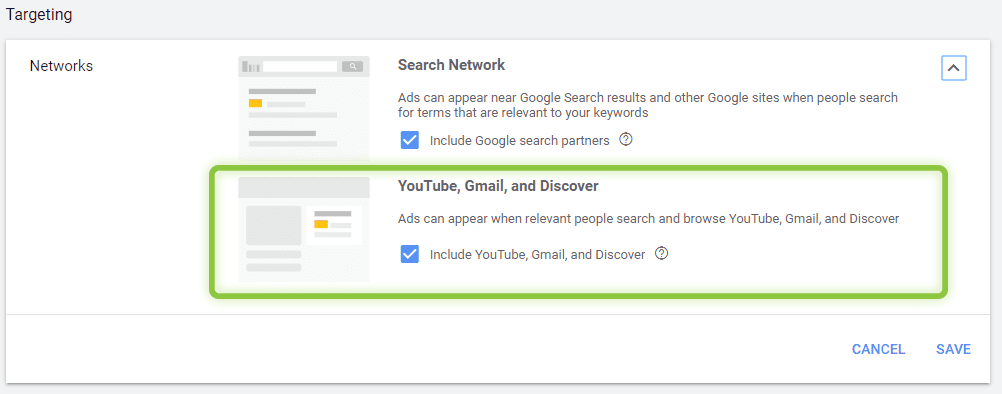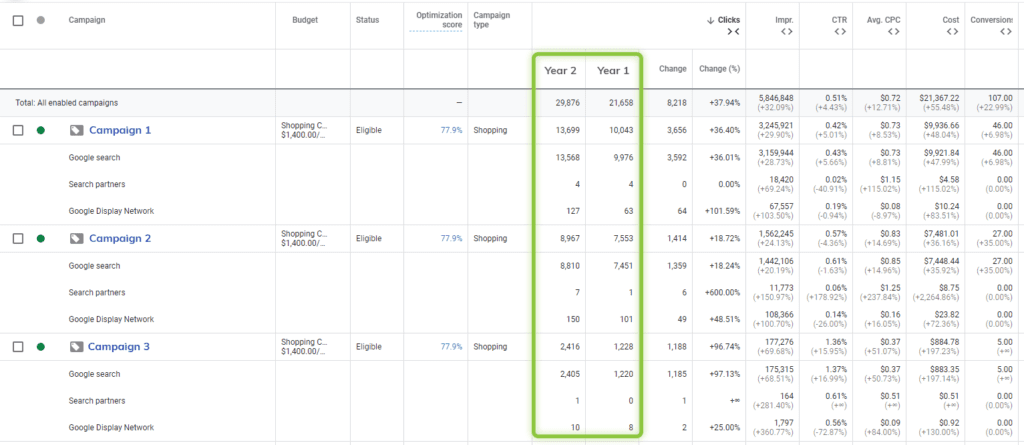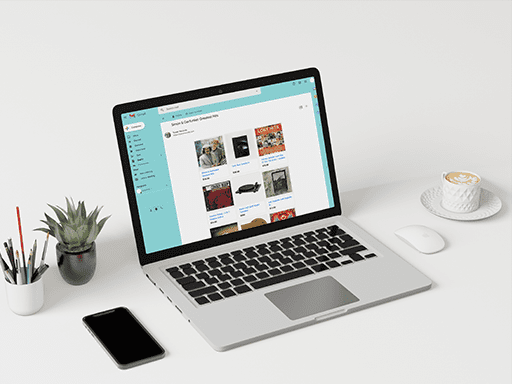What’s Happening: March 2020
This week, the first week of March, Google is rolling out a major update to shopping campaigns. Google Shopping ads will now be eligible to serve on Gmail. This change applies to every Shopping campaign that is opted into YouTube, Display Network, and Discover.
Sound familiar? Advertisers who have used Smart Shopping Campaigns have already had access to this feature for nearly two years. After this week, however, all Google Shopping ads that are opted into the Display Network will be eligible to serve in the Gmail ad space.
Be aware that this is the default setting for Google Shopping. Most campaigns will automatically have Display (and by extension — Gmail) ads enabled, but you can double-check in your campaign settings.

Need more help enabling this setting? Check out Google’s documentation.
How to Test Google Shopping Ads in Gmail
If you are not already opted into Google Display ads for Shopping, we highly recommend testing this change across a small group of campaigns before enabling it across your entire account. Ideally, you should choose a campaign with roughly average performance, that isn’t experiencing a lot of seasonality, and drives enough traffic to perform a proper test.
Plan to give the test at least a week or two to run, but keep a very close eye on ad spend. If costs begin to spiral out of control, consider lowering bids or stopping the experiment entirely. Keep in mind that as impressions rise, click-through and conversion rate might temporarily fall. Often, display placements create incremental lift that can be difficult to track, so consider using more than one attribution model to view the results (more on that below!)
How to Measure the Impact of This Change
On that note — let’s discuss how to accurately assess the success of Gmail and other display placements.
You can get a quick look at campaign performance in Google Ads. Start by segmenting your campaign performance by Network. These new placements are rolled into the larger Display Network, so look for incremental lift in that area to determine how the Gmail placements are performing.

In the image above, you can see a change in Display network performance between one two-week period and another. If you’re seeing a positive increase in impressions, clicks, click-through rate, conversion rate, or all of the above – that’s a good sign! Just monitor cost to ensure you’re maintaining profitability.
For a more detailed look, we recommend tracking campaign performance in Google Analytics. Analytics attributes individual transactions to campaigns, making it the best source of truth for revenue tracking. Last-click tracking is a good start, but we recommend using multiple attribution models as well. Multiple models offer multiple views of your data, giving a holistic look at how these new placements are really impacting your campaigns.
Need more help managing your Google Shopping campaigns? Our analysts are standing by — reach out to us today!






